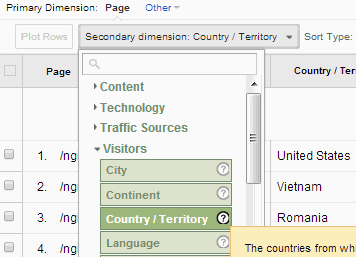Enhance Your Information Evaluation Using Additional Dimension in Google Analytics
Discovering the abilities of additional measurements in Google Analytics opens a world of possibilities for refining information evaluation. By layering additional measurements onto primary data collections, a more complex story arises, dropping light on customer communications and performance indications.
Recognizing Secondary Measurements
In the realm of information evaluation, an important aspect to grasp is the principle of additional measurements and their significance in removing deeper understandings from Google Analytics records. Second dimensions in Google Analytics describe additional specifications that can be included in the key measurement, permitting a much more thorough evaluation of information. By including secondary dimensions, experts can segment and filter data to discover patterns, fads, and connections that may not be evident when taking a look at the data in its entirety. These secondary measurements can supply context and a more comprehensive understanding of customer actions, traffic sources, and other key metrics tracked by Google Analytics.

Advantages of Using Secondary Dimensions
When analyzing data in Google Analytics, the usage of second dimensions uses very useful insights into individual habits and efficiency metrics. By adding a secondary dimension to your primary data, you can dig deeper into the attributes of your site site visitors and their communications.
In addition, second measurements boost the context of your key information, offering an extra comprehensive sight of customer engagement and performance metrics. On the whole, the usage of additional measurements in Google Analytics can dramatically improve the depth and quality of your information evaluation, leading to even more educated decision-making and boosted results.
How to Include Additional Dimensions
By integrating additional measurements in Google Analytics, individuals can get much deeper understandings into their information evaluation process, permitting for more comprehensive assessment of individual behavior and performance metrics. Including second dimensions is an uncomplicated process that can significantly boost the deepness of evaluation. Once in the record, find the "Additional measurement" tab over the information table.
Analyzing Data With Additional Measurements
Using second dimensions in data analysis provides a more detailed understanding of individual habits and efficiency metrics. By adding an additional dimension to your key information embeded in Google Analytics, you can dive much deeper into the attributes of your web site visitors and their communications. Combining the primary measurement of 'source/medium' with the secondary measurement of 'touchdown web page' can disclose which particular web pages are attracting website traffic Recommended Reading from different sources, assisting you optimize these web pages for much better engagement.

Fundamentally, analyzing data with secondary measurements encourages you to gain valuable insights right into user behavior, identify trends, and make informed decisions to improve the performance of your electronic homes.
Best Practices for Secondary Measurements
In data analysis, including additional dimensions successfully can significantly boost the depth of understandings derived from metrics and customer habits patterns. When utilizing additional measurements in Google Analytics or any type of other analytical tool, it is vital to comply with ideal methods to ensure the precision and relevance of the data evaluation.
One key best practice is to carefully choose second measurements that enhance the key dimension being assessed. Choosing additional measurements that offer extra context or further division can supply a much more thorough understanding of the information. It is additionally important to stay clear of overcomplicating the evaluation by consisting of way too many secondary measurements, which might result in complication or dilution of understandings.
Furthermore, it is advisable to explore various mixes of key and secondary dimensions to uncover brand-new correlations and fads. Consistently improving the selection and examining of second measurements based on the specific goals of the analysis can lead to even more workable understandings. By adhering to these best techniques, data analysts can leverage additional measurements efficiently to improve the general information analysis procedure and decision-making capabilities.

Conclusion
Finally, including additional dimensions in Google Analytics is vital click for an extensive data analysis approach. By leveraging additional dimensions along with primary ones, analysts and marketing professionals can discover important understandings and correlations that can educate decision-making and optimize electronic marketing methods. Understanding exactly how to successfully make use of second dimensions and adhering to best practices will certainly enable specialists to draw out meaningful information and enhance their general efficiency metrics.
Additional dimensions in Google Analytics refer to extra criteria that can be added to the primary measurement, allowing for a much more thorough analysis of information. By including second dimensions, experts can section and filter information to reveal patterns, fads, and connections that might not be evident when looking at the information as a whole. Incorporating the key dimension of 'source/medium' with the second measurement of 'touchdown web page' can expose which certain web pages are bring in web traffic from different sources, helping you enhance these pages for much better involvement.
One trick ideal technique is to carefully select second dimensions that enhance the key measurement being analyzed. By following these finest methods, data analysts can utilize second measurements efficiently to enhance the overall data analysis process and decision-making capabilities.
Comments on “Step-by-Step Overview: Leveraging Secondary Dimension in Google Analytics”